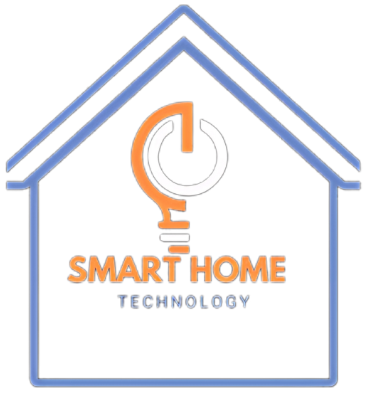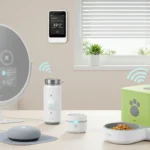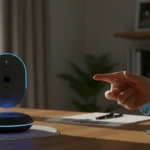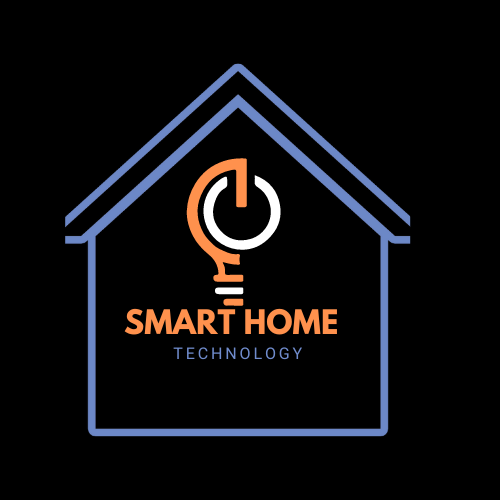Find out what’s new in smart home technology you can control with your voice. Voice technology is changing the future of smart homes in many ways, from AI-powered helpers to better security features.
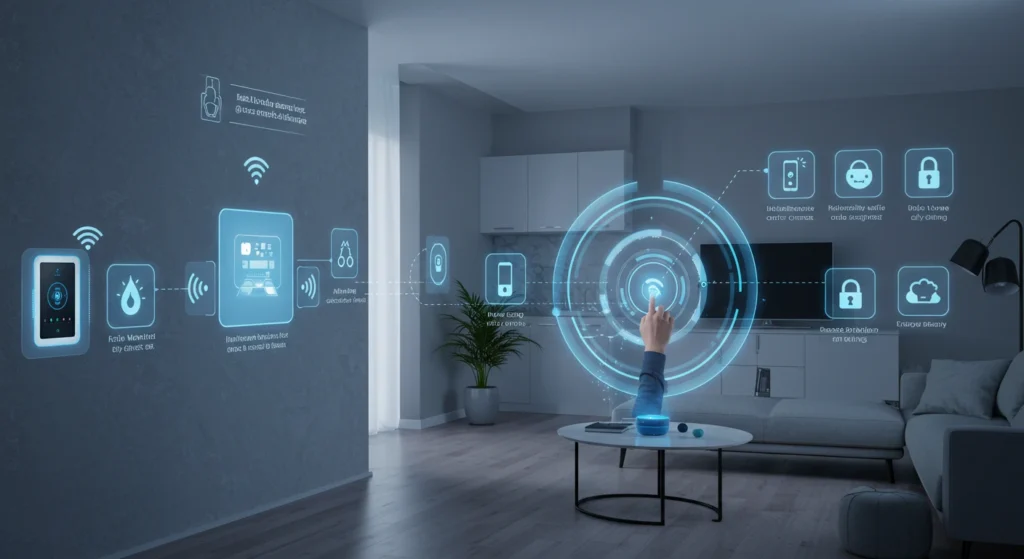
Table of Contents
Introduction
I recall feeling like I was in a science fiction film the first time I spoke to my smart speaker. I said, “Turn off the lights,” half expecting it to stop talking. But then the lights went out, and I was immediately captivated. We are far beyond basic commands now.
With AI becoming more intelligent, houses becoming more networked, and our dependence on voice assistants increasing daily, voice-controlled smart home technology is developing quickly. What comes next? Imagine artificial intelligence (AI) that anticipates your wants, voice-activated security systems, and even gadgets that can sense your emotions.
Let us explore the future of voice-activated smart homes: what is already in the works, what is just hype, and what will truly transform our way of life.
AI-Powered Personalization – Your Home Learns You
Have you ever wished there was a way for your house to know what you need before you even thought to ask? I know I have, and in 2025, it will all come true.
AI-Driven Voice Assistants That Anticipate Your Needs
I enjoy how AI-powered voice assistants are suddenly learning my routines and habits. Imagine waking up to a home that automatically changes the thermostat, begins your favourite playlist, and even reminds you of your first meeting of the day—all without you having to do anything. While I like the ease, I wonder about the amount of personal data obtained. While this is a significant step forward, it has a caveat concerning privacy.
Context-Aware Responses and Conversational AI Improvements
I am ecstatic at how much more natural my conversations with my voice assistant have become. Now that they understand what I mean by “I am feeling cold,” my assistant can suggest that I turn up the heat immediately. Still, I have had glitches where the system misunderstood a subtlety in my tone occasionally. These changes are significant but also make us realize that technology is not quite there yet.
Personalized Smart Home Experiences Based on User Behavior
My place is slowly getting more in sync with what I like—from lighting that creates the right vibe for movie nights to coffee, which I enjoy every morning. It feels like my place is getting to know me better over time. But I also watch out for the possible downsides: the more my home knows about me, the more I need to protect that data from misuse.
Enhanced Security & Privacy Features
Security always comes first, even as I welcome more clever features. Here’s what I have found regarding the most recent improvements.
Voice Recognition for Multi-User Authentication
I am impressed by the rapid development of voice recognition as a dependable multi-user authentication technology. This means that every family member can have individual access without using passwords, which increases convenience considerably. However, occasionally, I worry about the danger of false recognition or spoofing, which developers are working hard to correct.
AI-Powered Threat Detection and Security Integration
I’ve seen how AI-powered threat detection systems can warn you about any weird happenings at home. These systems are like having a digital security buddy constantly watch over things. But there have been times when false alarms made me stop and double-check, reminding me that no system is perfect.
Privacy Concerns and How Companies Are Addressing Them
Regarding privacy, I value businesses that emphasize openness and strong encryption techniques. Their goal is to give us authority over our data. However, I continue to be watchful—the best way to safeguard my data is to make sure I frequently check my settings and keep up with the most recent security patches.
Voice-Controlled Home Automation Beyond Basics

Let’s go beyond the basics of turning lights on and off. I’m excited about how far home automation has come but, admittedly, a bit cautious about its complexity.
Integrating Voice Commands with Home Robotics
I have been working on combining voice commands with my house robot. It is fantastic to see a robot vacuuming, sorting clutter, and even helping with little chores. Although I find this quite helpful, I wonder about the dependability of these systems under different circumstances.
Advanced Routines: Multi-Step Automation Sequences
Imagine saying, “Goodnight, home,” and simultaneously having your house activate the alarm, lower the lights, change the temperature, and lock its doors. I have liked how simple these sophisticated routines are. But if one of the devices in the sequence breaks down, it may throw the entire operation off. I always strike a balance between automation and redundancy.
IoT Expansion and Cross-Device Communication
We have more connected smart devices than ever before. I adore how my lights and security system work together or how my smart fridge connects to my grocery app. However, this interconnectedness can also raise the possibility of vulnerabilities, so it is crucial to keep your network secure.
The Role of 5G and Edge Computing in Smart Homes
The rollout of 5G and edge computing is a game changer for my smart home setup, and I’m here to share how it affects my daily tech interactions.
Faster Response Times for Voice Commands
My voice instructions are now being executed practically instantly. 5G-powered responsiveness enhances the fluidity and naturalness of interactions. Naturally, not everyone has switched to 5G yet, and it can be expensive, so it is crucial to consider these aspects.
Reduced Latency with Edge Processing
With edge computing, data is processed locally, which means reduced latency. Since less data is sent to the cloud, I appreciate the quicker response times and enhanced privacy. However, ensuring that all devices in my home work seamlessly with edge processing can sometimes be challenging.
Seamless Integration with Multiple Devices
I am pleased with the ease with which my smart home appliances can connect—integrating many gadgets results in a genuinely cohesive ecosystem. However, maintaining these interactions requires constant supervision and frequent updates, which can occasionally be stressful.
Voice-Controlled Smart Homes and Healthcare

One of the most heartening trends I’ve seen is integrating smart home technology with healthcare, making our lives easier and healthier.
Hands-Free Assistance for Seniors and Disabled Users
Voice-controlled smart homes provide unprecedented independence to my elderly neighbours and disabled family members. I have seen how these technologies may make daily duties easier, allowing them to live safely at home. However, any technical problems in such vital systems remind me of the significance of dependability.
Voice Tech in Remote Patient Monitoring
I am interested in how voice technology is used for remote patient monitoring. This technology allows you to monitor health stats and get medical help when needed. However, this sensitive data requires serious security to protect it from breaches.
AI-Driven Health Recommendations via Voice Assistants
Picture this: You ask your voice assistant for some health tips. I’ve tried out some AI recommendations that help me manage my daily routines and stay on the move. That said, I always double-check these suggestions with a pro because depending solely on AI for health advice isn’t always reliable.
The Future of Multi-Language and Emotion Detection in Voice AI
I’m incredibly excited about the progress in multi-language support and emotion detection. These features will transform how we interact with our devices.
Smart Assistants That Detect Tone and Emotion
Have you ever wished your voice assistant could sense your mood? I do! The latest AI models can detect misinterpretation, allowing for more empathetic and personalized responses. While this is a giant leap forward in creating natural interactions, I also worry about the potential for misinterpreting emotions.
Expanding Language Support for Global Users
I am super excited about the growth in language support. Inclusivity matters to me. Voice assistants are improving at managing different languages, making them easier for everyone worldwide to use. However, getting perfect translations and nailing those cultural vibes is still work.
More Natural and Human-Like Conversations
Talking to my voice assistant is super fun, and I feel like I’m chatting with a real person. Chatbots and AI have stepped up their game, making conversations more manageable and straightforward fun. On the other hand, it’s tricky to find the sweet spot between helpful automation and feeling like you’re chatting with a robot—getting that balance right is super important.
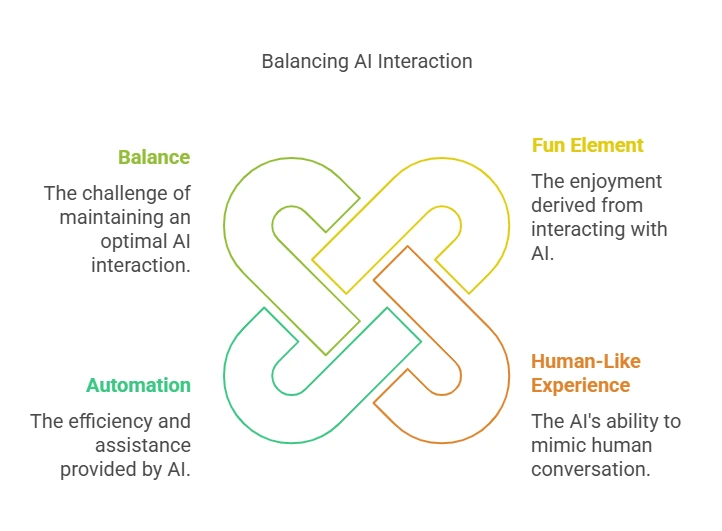
A Quick Snapshot: Benefits vs. Challenges
To give you a clear picture of my observations, here’s a table summarizing the benefits and challenges of these emerging trends in voice-controlled smart home technology:
| Trend | Benefits | Challenges |
| AI-Powered Personalization | Anticipates needs, provides context-aware responses, and tailors experiences based on behavior. | This raises privacy concerns and may lead to over-reliance on automation. |
| Enhanced Security & Privacy Features | Offers multi-user authentication and AI-driven threat detection, enhancing home security. | Complexity can result in false alarms and persistent privacy challenges. |
| Advanced Home Automation | Enables multi-step routines, integrates with home robotics, and expands IoT connectivity. | System malfunctions can disrupt routines, and increased connectivity may lead to vulnerabilities. |
| 5G and Edge Computing | Delivers faster response times, reduced latency, and better local data processing. | Requires costly infrastructure upgrades and consistent device management. |
| Smart Homes & Healthcare | Provides hands-free assistance, remote patient monitoring, and personalized health recommendations. | Critical reliance on accurate data and robust security for sensitive health information. |
| Multi-Language & Emotion Detection in Voice AI | Facilitates natural, empathetic interactions and broadens accessibility for global users. | Calibration issues and potential misinterpretations can affect user experience. |
Conclusion
The next phase of voice-controlled smart homes will involve giving commands and seamless, predictive automation that genuinely understands you. AI-driven personalization, enhanced security, and emotion-aware assistants will make our homes more intelligent and intuitive than ever.
But with this power comes responsibility—privacy concerns, security risks, and ethical questions will shape the evolution of these technologies.
What excites you the most about the future of smart homes? Drop your thoughts in the comments below!
FAQs
How secure are voice-controlled smart home devices?
Modern smart home devices use encrypted connections and voice authentication, but users should enable multi-factor authentication for extra security.
Will AI-driven voice assistants replace manual controls?
Not entirely—manual controls will still be an option, but AI automation will reduce the need for manual adjustments.
How does voice control improve accessibility?
Voice assistants help seniors and disabled users control devices hands-free, improving independence and convenience.
What are the biggest privacy concerns with voice assistants?
Always-on listening raises privacy concerns. Companies are working on local processing to keep data secure.
How will 5G improve smart home voice control?
Faster network speeds mean near-instant responses and better connectivity between devices.
Can voice-controlled smart homes work without the internet?
Some features can function locally, but cloud-based AI features require an internet connection.
Will voice assistants be able to detect emotions?
Yes! Future AI will analyze tone and speech patterns to offer personalized responses.
Can I integrate all my smart home devices with a single voice assistant?
Many brands now support cross-platform integration, but compatibility varies by device.
What’s the difference between smart speakers and smart displays?
Smart speakers handle audio commands, while smart displays add a visual interface for additional functionality.
Are voice-controlled smart homes worth the investment?
If convenience, automation, and security matter to you, a voice-controlled smart home is worth considering.
